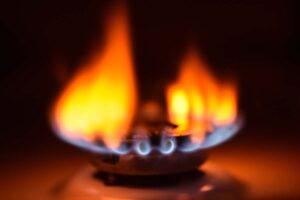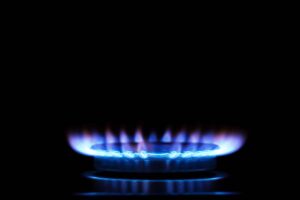Know What to Watch For and What to do if Your Propane Appliance isn’t Working Like it Should Be
Combustion is what keeps you warm and your appliances running. In most cases, it will run smoothly without any issues. However, it’s important to be aware of the signs in case a problem arises.
What is Combustion?
Combustion is a chemical reaction that transforms your propane into energy. It needs three elements to function:
- Fuel (in this case, propane)
- Oxygen
- Ignition source
The ratio for ideal combustion is one part propane to twenty-four parts oxygen (4% propane to 96% oxygen). This ideal, complete combustion should have a blue flame.
Dangers of Incomplete Combustion
While the ideal combustion of propane does create some flue gases, these are usually safe carbon dioxide and water. However, when the ratio of propane to oxygen changes, this can potentially be very dangerous. Carbon monoxide and aldehydes may be released as a product of incomplete combustion.
Signs of Incomplete Combustion
Check the flames on your burners to see how your combustion ratio is working.



If your flames are looking like the Lean or Rich Burn, the ratio is off and you should shut off the appliance. Reach out for an inspection, where our service technicians can double check your propane appliances. If you suspect carbon monoxide is present, immediately go outside and call emergency services. Make sure you have CO detectors in your home. If incomplete combustion has occurred, it’s important that you stay safe. Familiarize yourself with signs of carbon monoxide exposure:
- Flu-like symptoms – headaches, nausea, dizziness
- Blurred vision
- Difficulty breathing
- Loss of consciousness
Also, keep an eye on plants in your home. If they are dying suddenly or wilting, there might be CO present. Condensation on windows and cool surfaces can also be an indication.
How to Keep an Ideal Burn
The most efficient way to ensure a proper combustion ratio for an ideal burn is to make sure your propane system is running correctly. Make sure you have a regular appliance inspection. This should be conducted annually. Whenever you have an inspection, tell the service technician about any changes that might have occurred to your propane system. This can be new appliances, removing an appliance, or even construction or maintenance that was done near your system. Take steps to ensure your tank doesn’t run out of propane, either by setting up automatic deliveries* or calling to be put on a delivery route whenever your tank reaches 30%.
*some restrictions may apply, reach out to your local branch for more information.
Printable Version of our DLE Spring 2022 Propane Press
